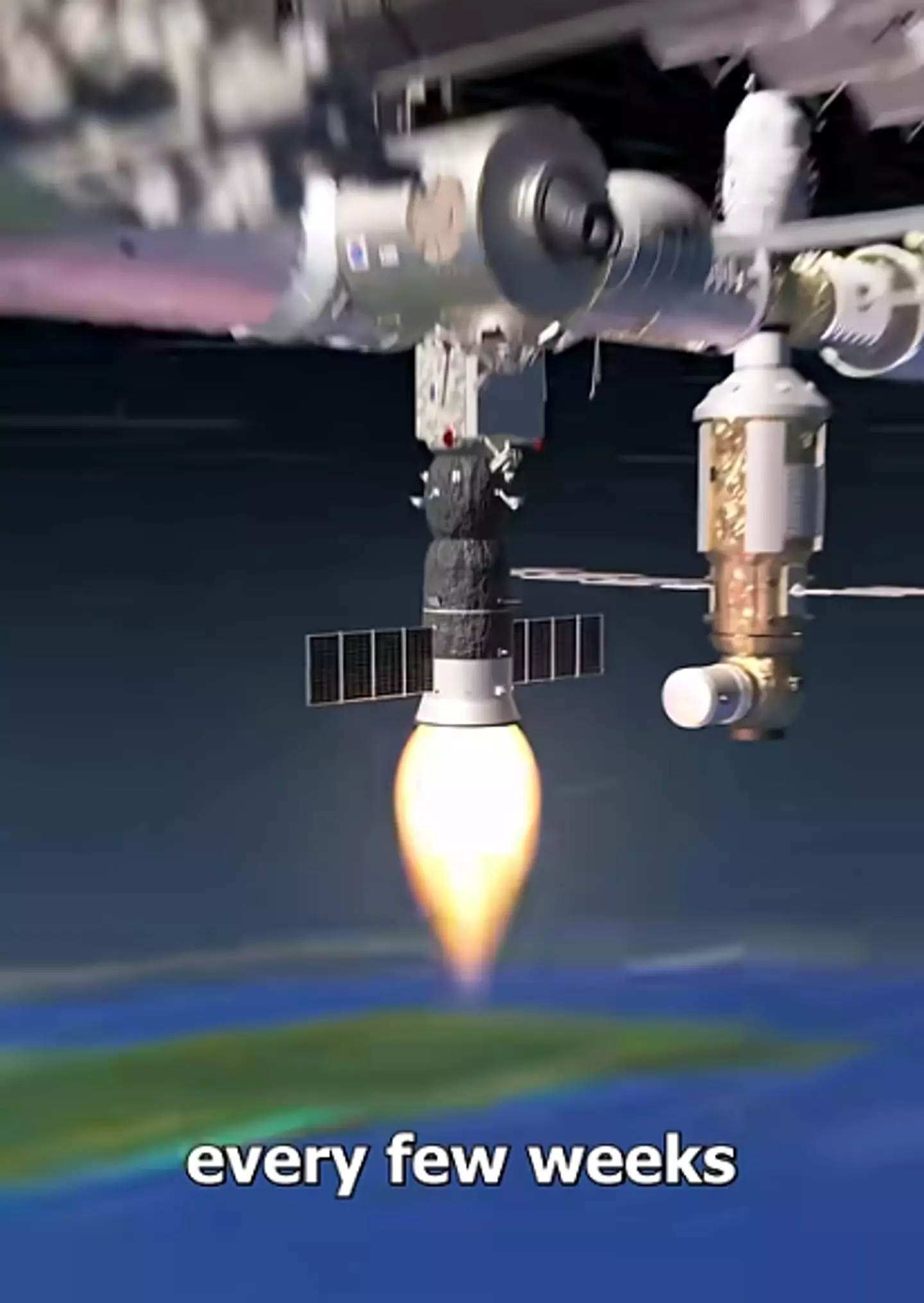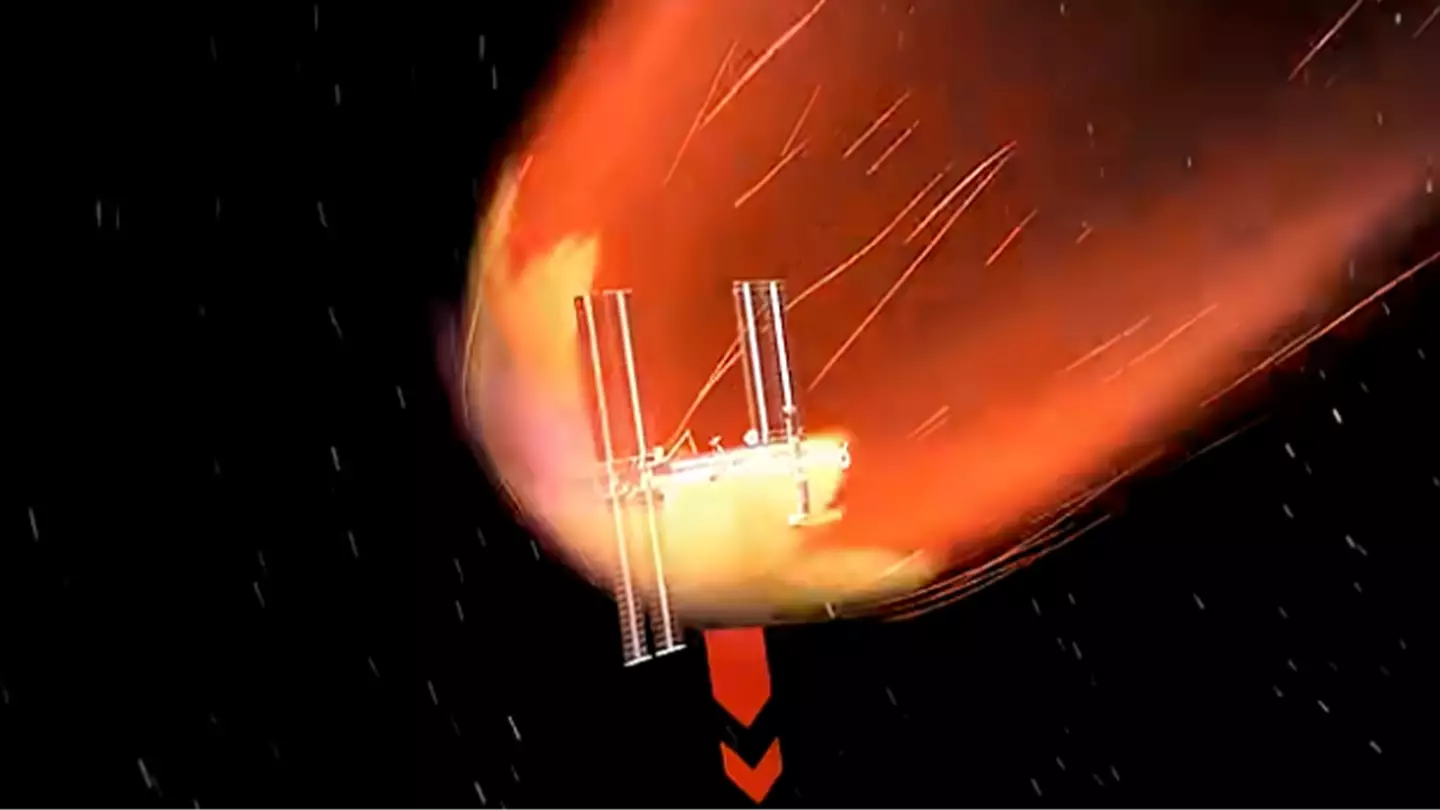A fascinating simulation has demonstrated how the International Space Station (ISS) avoids crashing into Earth despite its constant state of “falling.”
The ISS, a large, habitable satellite approximately the size of a football field, is perpetually in motion. It orbits the Earth every 90 minutes at an altitude of about 250 miles and is a collaborative effort managed by several international space agencies, including NASA.
Although the station orbits just above Earth, gravity does not pull it down to the surface, preventing a catastrophic descent and eventual incineration in the atmosphere.
Recently, a viral simulation by popular YouTube creator Zack D. Films has effectively illustrated why the ISS remains in its stable orbit and avoids this disastrous fate.
In the simulation, the ISS is depicted racing around Earth, accompanied by the explanation: “The space station is constantly falling, but it’s moving forward so fast that as it falls, it keeps missing the planet.”

“This continuous fall creates a loop, keeping it circling around Earth rather than crashing into it,” the caption continues.
The filmmaker further explains: “But the space station isn’t completely out of the atmosphere which does contain a tiny bit of air. And as it loses speed, moving forward, gravity starts to pull it a little closer to Earth each day, meaning it would eventually fall to the ground.”
Fortunately, experts have devised a clever solution to counteract this risk.
“To fix this, the station uses small rocket boosts every few weeks to climb back up,” Zack elaborates, “which keeps it in perfect orbit.”
According to Space.com, the ISS remains in orbit due to principles of physics dating back to the 17th century English scientist, Sir Isaac Newton, who proposed the theory of gravity.
The website explains that it comes down to the ISS’s orbital velocity—its distance above the ground—and the speed at which it is falling due to gravity.
“The rate at which the ISS falls as it follows its curved path equals the rate at which the curved surface of Earth drops away below it,” it states, describing how this is achieved ‘with certain combinations of height and orbital velocity.’

The ISS typically orbits at a height of around 420 kilometers, traveling at 7.6 kilometers per second, which is the precise velocity needed to maintain its path that matches Earth’s curvature.
If these conditions changed, for instance, if the ISS was orbiting Earth at a higher altitude, it wouldn’t need to travel as fast to stay aligned with Earth’s curvature. Conversely, at a lower altitude, it would require a higher speed.
The ISS also relies on human intervention to ensure it doesn’t plunge into the atmosphere, as it ‘cannot be left to its own devices indefinitely,’ according to Space.com.
This necessity arises because the ISS orbits within Earth’s atmosphere, specifically in a thinner region known as the thermosphere, which generates drag that reduces its speed, causing it to lose approximately 100 meters in altitude daily.
As highlighted by the simulation, the ISS is equipped with thrusters that elevate it back to its proper orbit ‘every month or so.’
Without these corrections, the ISS would gradually descend further into the atmosphere and eventually disintegrate like a meteor.

